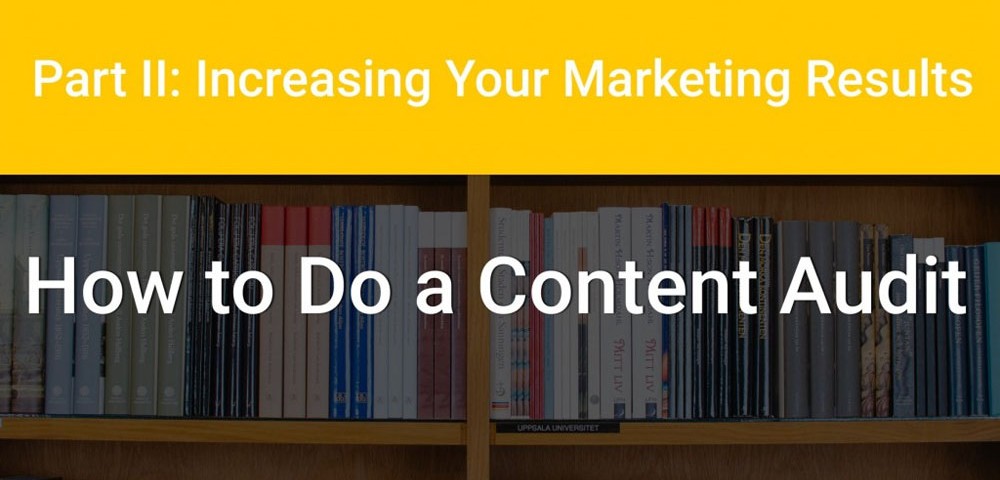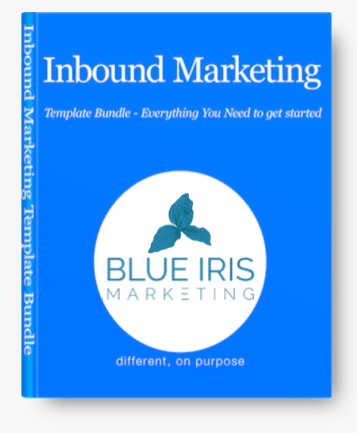How to Do A Content Audit

The Buyer’s Journey: What is the Consideration Phase?
October 7, 2016
The Buyer’s Journey: What is the Decision Phase?
October 15, 2016Part II: Increasing Your Inbound Marketing Results in 7 Easy Steps
How do you perform a content audit and why is it important? Unless you are a new business, you likely have a ton of existing content. Much of it was likely developed prior to researching and creating your detailed buyer personas. We find that the content was rarely written specifically for the buyer in a particular stage of the journey. It will take far less time to audit and refine your existing content than to reproduce new content.
When you finish your content audit, you’ll be surprised at how much better it performs.
Step One: We covered Step One in this series here. Take a few moments to review and download the template. You’ll be up to speed and ready to create content that converts!
Conduct the Content Audit – Step Two
Conducting a thorough content audit is an important step in the inbound marketing preparation phase. It is the process of auditing all your existing content, offers, and marketing assets. Evaluate each piece to determine which phase of the buyers journey it addresses and to which of your buyer personas it speaks.
You’ll also identify your existing calls-to-actions to see if they need tweaking. Are they appropriate for the buyer persona, the phase and the content you are using them with?
We’ve written a comprehensive article that outlines, step-by-step, how to conduct your content audit. We’re even sharing our agency’s time-tested Inbound Marketing templates to help you get started!
As you evaluate your existing content, review it to determine whether it needs to be updated or refined.
- Be sure it speaks directly to a specific buyer persona.
- Does it address the needs or answer the questions of that buyer in the stage of the journey they are in?
- Make clear notes about improvements it needs.
- Prioritize and update accordingly.
The Content Audit guide and tool is included in our Inbound Marketing Template bundle. It will help you refine your content so that it attracts, converts and delights your buyer.
We wrote a comprehensive article that details the process of creating content for each phase of the buyers journey. Within this “how-to” piece, we outlined the 5 Steps to Auditing Your Existing Content. In summary, here’s what it covers in great detail:
- Analyze your entire content library
- Modify content that is not aligned with a specific phase
- Map your existing content to each buyer persona
- Make a list of ideas, observations and modifications required to improve your content
- Begin the development of your Content Roadmap and Strategy prioritizing short-term and long-term action steps
Map Your Content to the Buyers Journey – Step Three
Content that converts speaks directly to your buyer persona. It resolves their questions and moves them toward the next step of discovery. Map existing and new content to the proper buyer’s journey phase. To increase conversion, be sure your calls to action speak to your buyer’s needs in each phase.
There is a science to the type of content that you should produce in each of the three buyer’s journey phases.
As you probably guessed, we’ve written an exhaustive “how-to” series that helps you create a detailed Buyer’s Journey. It consistently improves conversions on behalf of our customers. Are you ready to convert more strangers to leads and leads to customers? It will also help you convert targeted traffic into a loyal brand ambassador!
We also provide a detailed, step-by-step guide and template you can download for free.
Identifying Your Buyer’s Needs and Keyword Research – Step Four
At this stage, you have completed your buyer personas and buyer’s journey. If you’ve used our how-to guides and templates, you’ve also listed the thoughts your buyer is experiencing. In addition, you’ve identified her challenges, needs and opportunities.
If you get stuck, check out this detailed “how-to create content for each phase of the buyer’s journey” article.
The keywords and longtail phrases your buyer is likely to search have emerged from this work. As such, our guides and articles have prompted you to make a list of them for each phase. These search terms represent her thoughts, pains and experiences. Use these longtail phrases to begin your keyword phrase research.

A lot of tools are available to help you zero in on the most accurate (long tail) phrases your buyer is likely to use. If you don’t currently use a keyword research tool, we’ve provided some suggestions to help you with your research:
MOz Keyword Explorer will help you identify the difficulty and popularity of your keywords and phrases. Moz provides excellent “how-to” information to help you get the most out of this tool. Moz has lots of free tools you may find useful as you develop and optimize your content.
Google’s Adword platform is also a good way to identify the highest potential keywords to use in your content. You do not have to place an ad to use the tool for research. There is much written about how to use it as a keyword research tool. Simply Google, “how to use Google Adwords tool for keyword research.”
SEMrush SEO & Competitive Data
My favorite tool is SEMrush. You can subscribe to their basic program (which is very comprehensive) for about $69 per month. This tool is crazy! It provides every kind of data you need to produce killer content. Its features can also help you refine your existing content for even better performance.
Browser Queries and Search Suggestions
One phase at a time, search the longtail keyword phrases you believe your buyer might search. Review the results on page one of the search engine results. Are the results similar to what your buyer would be looking for? If not, refine the query until you begin getting the proper results.
Once you are getting the proper results, begin recording those long-tail search terms. Scroll to the bottom of the pages that return proper results, review the alternate search terms Google recommends. Test them to see if they return the results your buyer would want. Record those that return the desired results.
Transfer the ideal search phrases into the appropriate phases of your buyer’s journey template.
Next, identify related keywords and phrases that would naturally evolve out of a human conversation around your topics. Conduct the same research with these peripheral keywords and phrases.
For instance, if you were a bicycle seller, you would naturally talk about bicycle components like brakes, wheels and tires when talking about your bikes. You would also write posts about best places to ride, seasonal bike clothing and more. Be sure to do the same with the content you create. Research the natural related terms to be sure you include those with the highest ranking potential.
Ryan Shelley (@ryan_shelley) reminds us that there are 7 kinds of keywords that need to be included in your content:
- Market-defining keywords
- Customer-defining keywords
- Product or Solution keywords
- Industry thought leaders
- Company names of competitors
- Related vertical keywords
- Geo-targeted keywords
With these items completed, you are ready to start building your Content Strategy.
Stick with us as we guide you through the remaining steps to creating a successful inbound marketing campaign. Our next article will discuss Step Five – Seven:
- Step Five: Your Campaign – Creating Content that Attracts and Converts
- Identifying Which Buyer Persona to Target First
- Developing Your Irresistible Offer
- Writing Content that Converts: Answering Your Buyer’s Questions in Each Phase of the Journey
- Improve Traffic to Your Blog: 25 Simple Steps to More Traffic, Leads & Sales
- Improve Your Content Offerings
- Optimizing Your Content
- How to Create Landing Pages that Convert
- How to Create a Call to Action that Converts
- Managing New Leads
- Conversion: Passing the Lead from Marketing to Sales Team
- Step Six: Email Marketing – Creating Nurturing Sequences
- Traditional CRMs vs Smart CRMs
- Moving Leads Down the Marketing Funnel
- Measuring and Monitoring Lead and Performance Data
- Step Seven: Promoting Your Content and Offers
- Driving Traffic to Your Website
- Search Engine Optimization
- Social Media
- PPC Ads
- Email Marketing
- Forums and Off-site Posting and Bloging
- Getting Your First Campaign Launched
The next article has a ton of powerful information to help you launch a successful campaign!
If you need any help throughout the process feel free to reach out to me via Facebook, Twitter, Email, or even the old fashion way – give me a call. I’m happy to help you!
Ready to get started? Our proven templates and guides will simplify the process.





